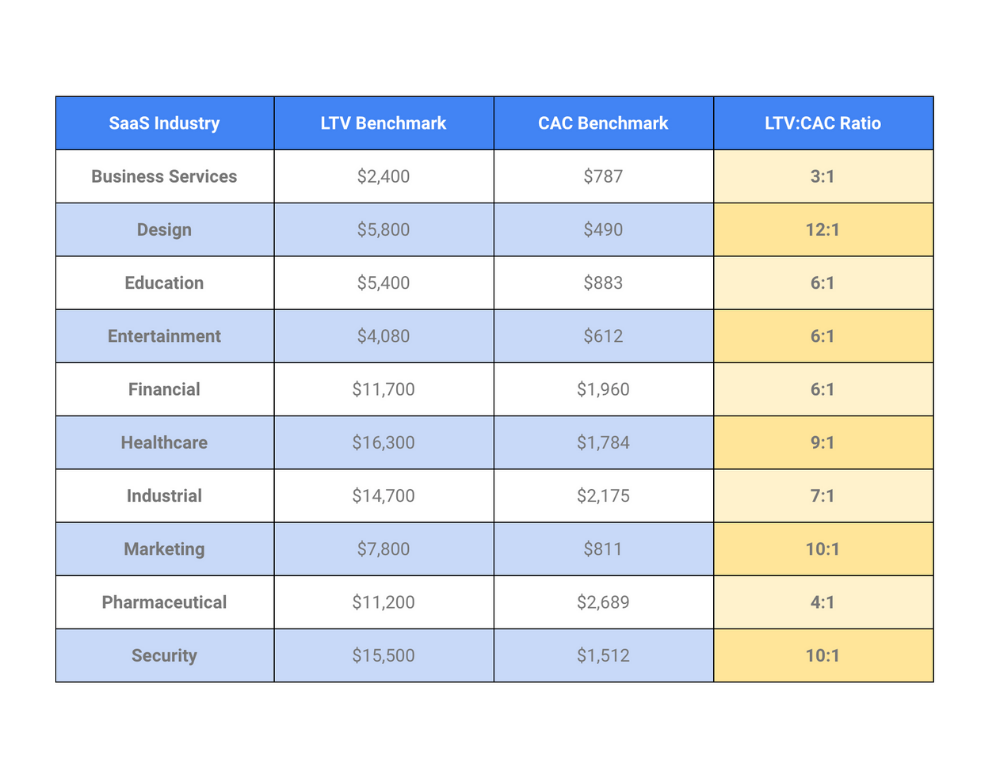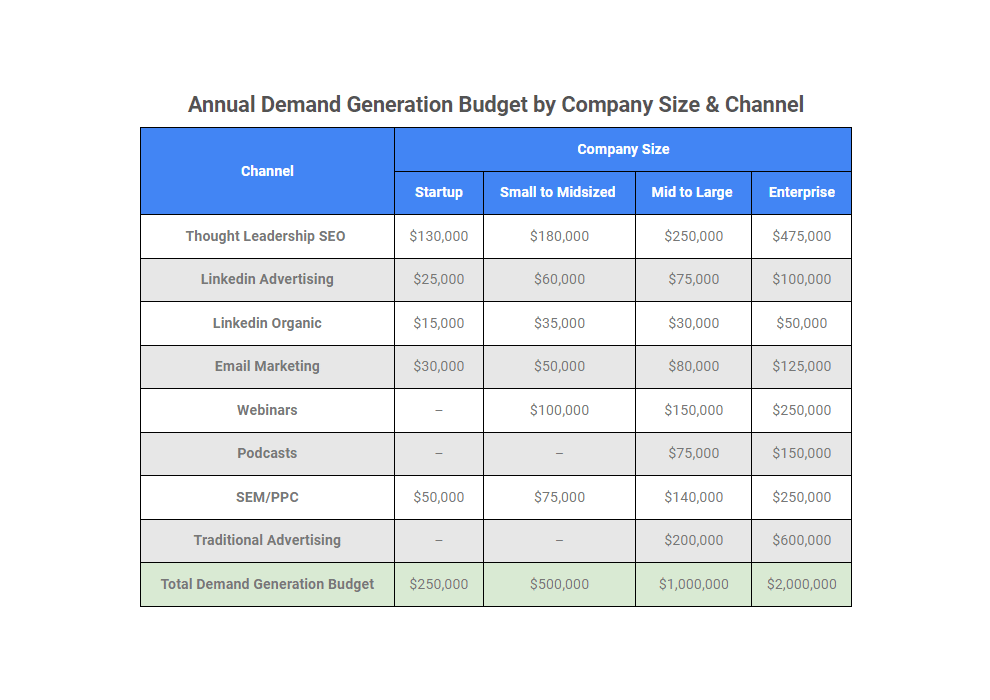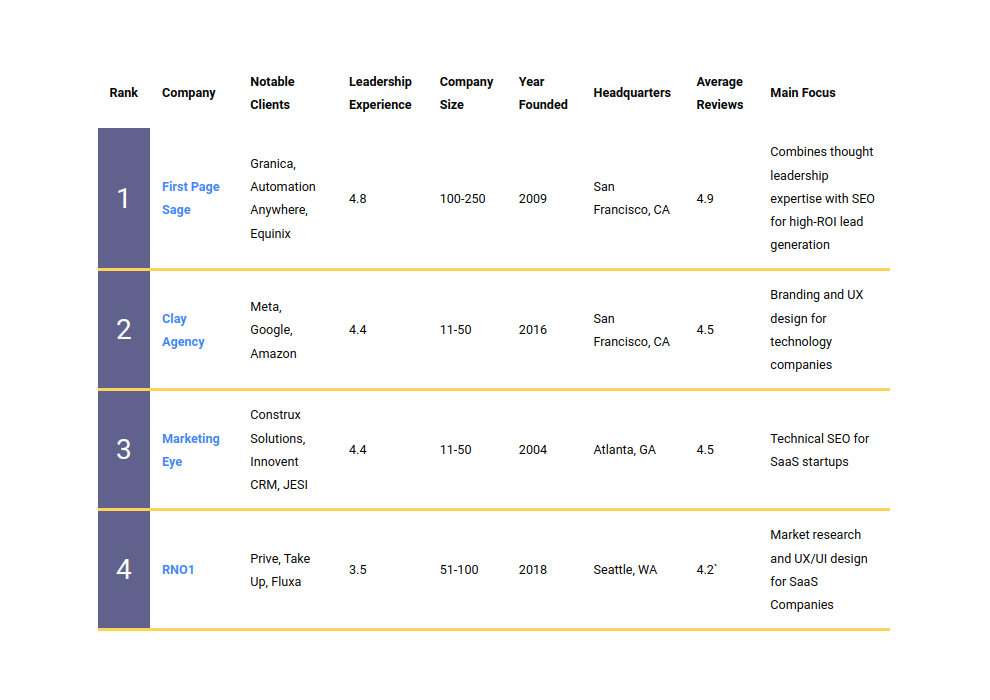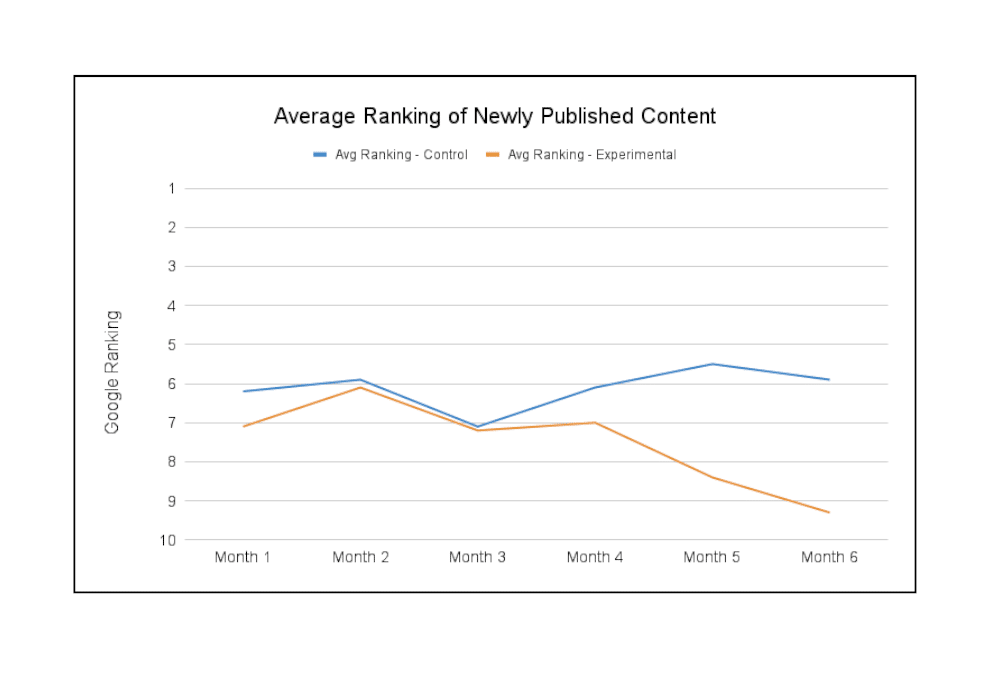Last updated: November 9, 2023
The ratio between Lifetime Value of a Customer (LTV or CLV) and Customer Acquisition Cost (CAC) is well-known among marketing leaders as a way of evaluating the efficiency of your marketing investment.
The traditional view on LTV-to-CAC ratio is that if you can gain a new customer by spending about a third of the gross profit you’ll make from that customer, you’ve done well.
This table breaks down the ideal LTV to CAC ratio:
LTV to CAC Ranges Explained
| CAC | Status | Explanation |
| 0.5:1 | Overspending | The company is earning less than it takes to actually make a new customer. |
| 2:1 | Needs Improvement | The company is making a reasonable amount of profit and is on the right track, but could be doing better. |
| 4:1 | Ideal | The sweet spot – the company is earning 4x from new customers as it is spending to get them, allowing for both profits and long-term growth. |
| 6:1 | Stable | The company is making excellent profits, however, a portion of their revenue could be used to grow the company further. |
| 8:1 | Poor Growth | The company is likely sacrificing long-term growth in favor of short-term profit margin |
As the table indicates, a ratio that is too high — say, 5:1 or greater — suggests that you’re sacrificing growth for profit margin. In other words, a higher profit margin should be less important to a SaaS business than increasing top line revenue; and therefore, it’s better to spend more aggressively and secure greater market share, than to spend more cautiously and keep a higher margin (but have lower revenue).
Understanding the LTV to CAC Ratio
The following sections outline how to calculate both LTV and CAC, as well as how the two interlock within the larger discussion surrounding the LTV to CAC ratio. Finally, we provide some real-world examples showing how LTV to CAC ratio can be used to examine actual companies.
Understanding LTV
LTV is calculated using the following formula:

This calculation is relatively straightforward for all but the youngest companies, as the nature of SaaS business models makes it relatively simple to determine both average customer lifespan and average annual revenue per customer. This metric tells you, on average, how much a single customer is worth for your business. LTV may also be calculated for specific customer segments such as industry, customer type, or lead source in order to fine-tune decisions about which marketing channels to use or which prospects to target.
Understanding CAC
CAC refers to the cost associated with gaining new customers, answering the question: “How much does your company spend in order to close one new customer?” CAC is calculated using the following formula:

As with LTV, CAC can also be further segmented to allow you to find the ideal marketing channels for both your audience and your budget. The list below contains several of the best low-CAC channels:
Low-CAC Marketing Channels
| Channel | Average CAC | Pros | Cons |
| Thought Leadership SEO | $647 | HIghest ROI of any digital marketing channel | Requires expertise to execute correctly |
| Creates warm leads by targeting search intent | Takes time to build your campaign | ||
| LinkedIn Advertising | $658 | Low startup cost | Takes time to gain traction |
| Audience is more receptive to B2B content | Requires high quality content to build engagement | ||
| Webinars | $603 | Creates a more personal connection with your audience | Demands an SME with the charisma to carry the presentation |
| Often attended by high-level decision makers | Requires some hardware (sound treatment, recording equipment) to create a quality presentation. | ||
| Email Marketing | $510 | Lowest average CAC of any marketing channel. | Needs to be combined with other marketing channels to be effective |
| Easy implementation | Good email lists are difficult to build | ||
| Trade Shows | $1,390 | Creates opportunities to meet with prospects in-person | Heavy competition for audience attention |
| Access to decision makers, who are more likely to attend | Requires significant expenses to attend |
A common thread among the lowest CAC marketing channels is that they often take time and require expertise to be successful. Because of this quality, they often provide smaller companies a greater ability to work within constrained lead generation budgets, substituting skill for spend. When used correctly over a significant period of time, these channels can even form the central channels of a successful company.
How LTV and CAC Relate to Each Other
LTV and CAC measure inverse qualities: how much you’re spending to gain new customers, and how much you earn from them over the course of their lifetime. By comparing the two, companies can get a high level view of how effective their marketing campaigns are.
As mentioned in the introduction, the traditionally suggested ratio is 3:1, meaning campaigns should be making 3x as much as they are spending to get new customers. While it’s often tempting to drive this ratio as high as possible (e.g. 6:1 ratio implies you are making 6x as much as you are spending), having such a high ratio typically indicates a company that is sacrificing long-term growth for immediate profits.
Time is also a significant factor in calculating LTV to CAC. For example, SEO campaigns take 4-6 months before producing notable results. During that time, your CACs will be significantly higher, lowering your LTV-to-CAC ratio. This suggests a need to view LTV to CAC over a longer time frame rather than on a weekly or even monthly basis, and as such, we recommend using an annual timeframe. Doing so also removes the impact of seasonality on your calculated ratio.
A More Nuanced View on LTV:CAC Ratio
The traditional view on LTV-to-CAC is sensible, but fails to account for three important factors.
- Not all SaaS companies are in a high-growth, start-up mode. If your business is a bit more established and your gross margin is an area of focus, a high LTV-to-CAC ratio is eminently desirable. There is a point in every company’s lifecycle when a profitable business is far more valuable than one that is growing at a breakneck pace.
- As software businesses evolve, LTVs rise and CACs fall. A healthy SaaS company raises its LTV over time through expanding its product’s features, adding other lines of software, and increasing its reputation. And a successful marketing department will eventually settle on the lead generation channels with the lowest CAC, negotiate better deals with vendors, and utilize scale to get better pricing. Thus, the LTV-to-CAC ratio lowers over time.
- Organic channels routinely see higher LTV-to-CAC ratios. The successful SaaS businesses we’ve worked with shoot for higher LTV-to-CAC ratios on organic marketing channels specifically, such as SEO, public speaking, LinkedIn organic, e-mail marketing, and webinars. Unlike paid channels, organic channels reward creativity and thoughtfulness more than dollars. Taken together, these factors point to a more reasonable LTV:CAC ratio benchmark of 4:1.
SaaS LTV-to-CAC Benchmarks
Let’s look at the LTV-to-CAC ratios for 10 SaaS industries. We calculated a rolling 3-year average LTV and CAC; along with the LTV-to-CAC ratio that produced.
Notes on our dataset: Our team compiled this data between 2016 and 2021. 64% of the data is derived from organic marketing channels, and 76% is from B2B SaaS companies, so the ratios you’ll find here will be higher than you’d get if you’re primarily utilizing paid channels such as advertising and PR, or if you’re a B2C SaaS business.
| SaaS Industry | LTV Benchmark | CAC Benchmark | LTV:CAC Ratio |
| Adtech | $6,800 | $956 | 7:1 |
| Business Services | $2,400 | $787 | 3:1 |
| Cybersecurity | $15,500 | $3,441 | 5:1 |
| Design | $5,800 | $895 | 6:1 |
| Edtech | $7,100 | $1,431 | 5:1 |
| Entertainment | $4,080 | $612 | 6:1 |
| Fintech | $11,700 | $2,496 | 5:1 |
| Industrial | $10,800 | $3,175 | 3:1 |
| Medtech | $16,300 | $3,665 | 4:1 |
| Pharmaceutical | $11,200 | $2,689 | 4:1 |
Since our dataset skews organic, we thought it would be interesting to separate out data where customers were acquired only through paid campaigns. When we did that, we found an average LTV-to-CAC ratio of 2.5:1.
Improving Your LTV to CAC Ratio
The agency side of our business has achieved exceptional LTV-to-CAC ratios via creative, thought-leadership based SEO campaigns. If you’re interested in exploring our agency services, you can contact us here.
Further Reading
If you found this report helpful, you may also be interested in our other B2B SaaS reports:



